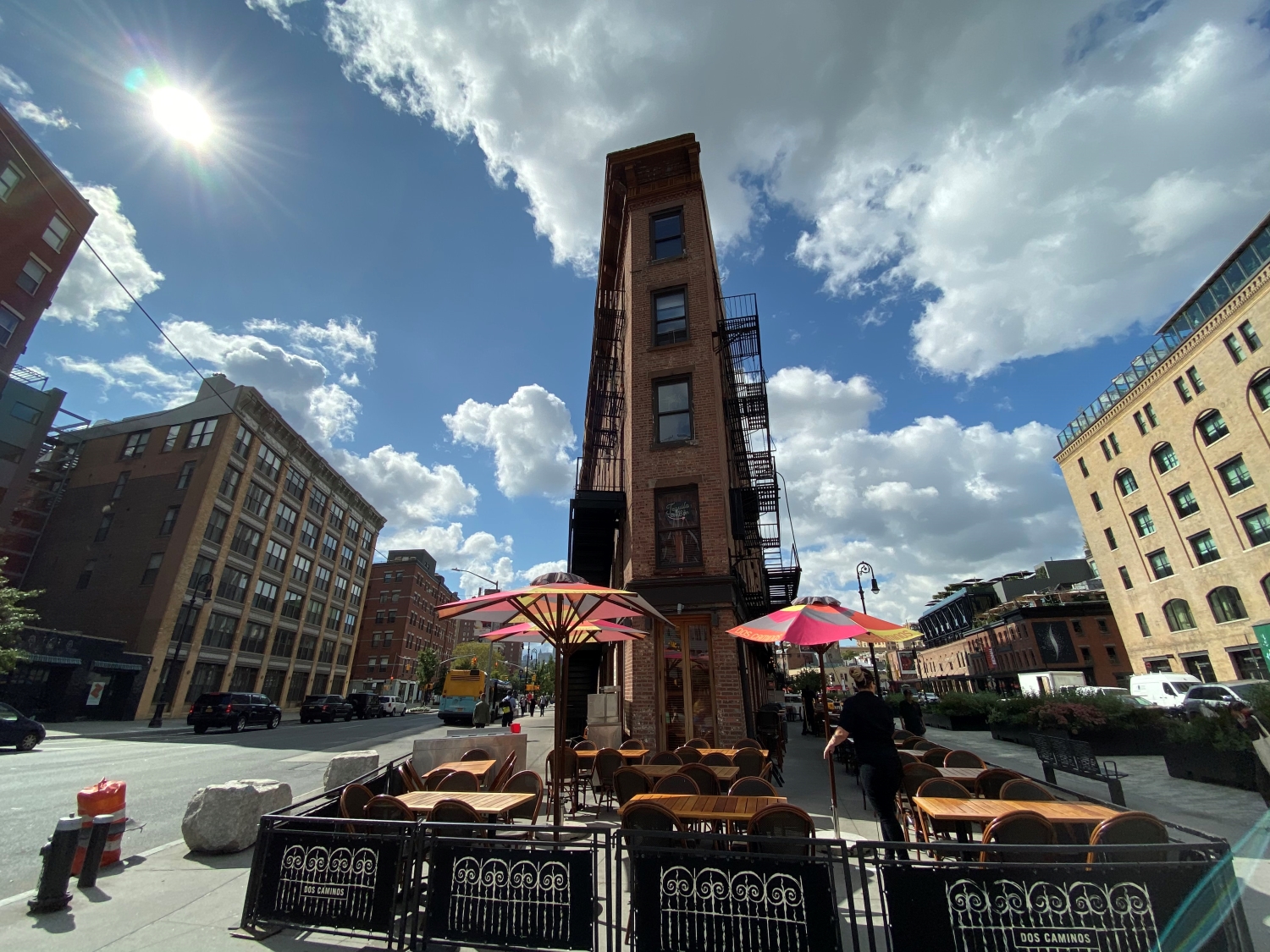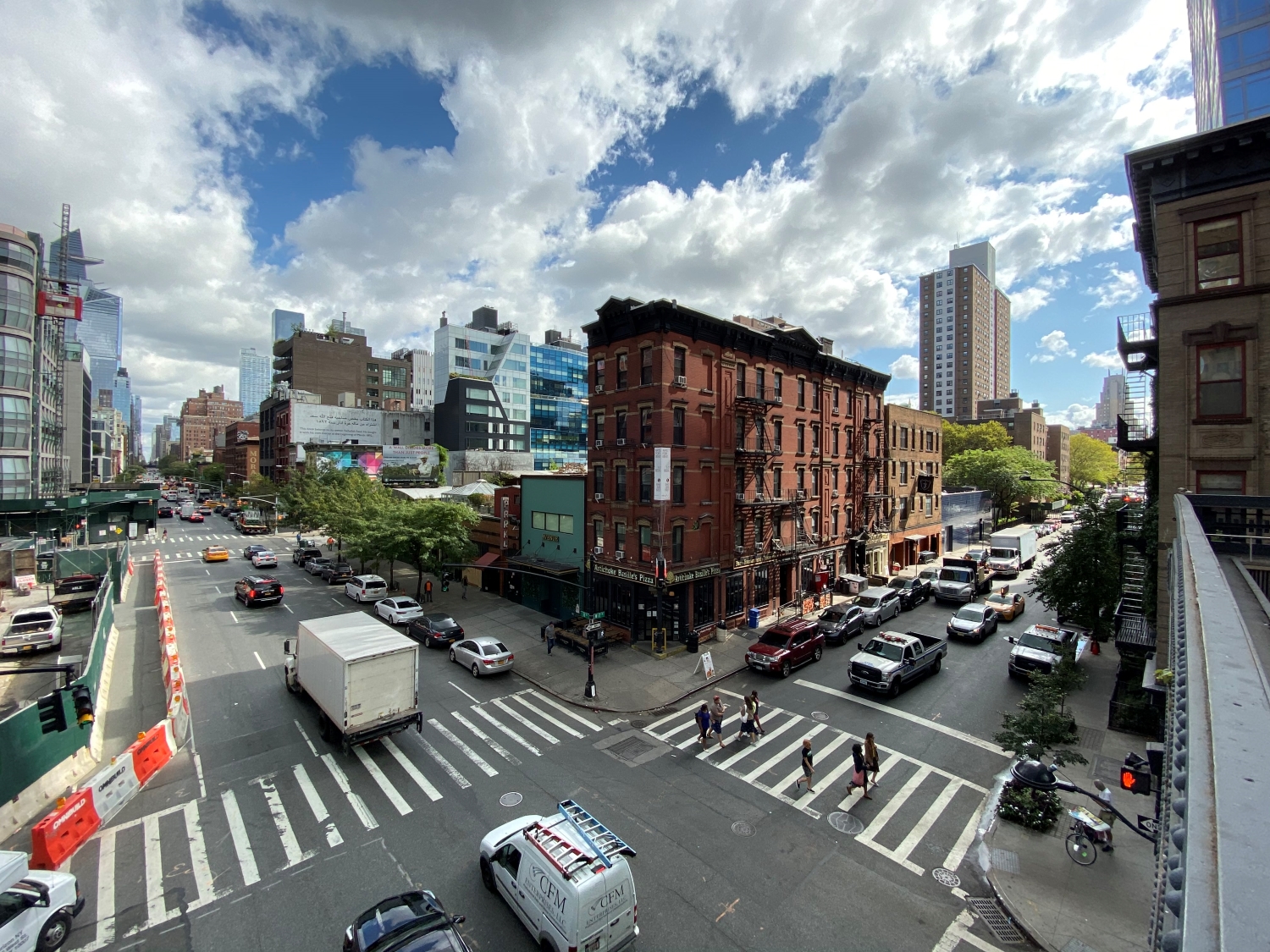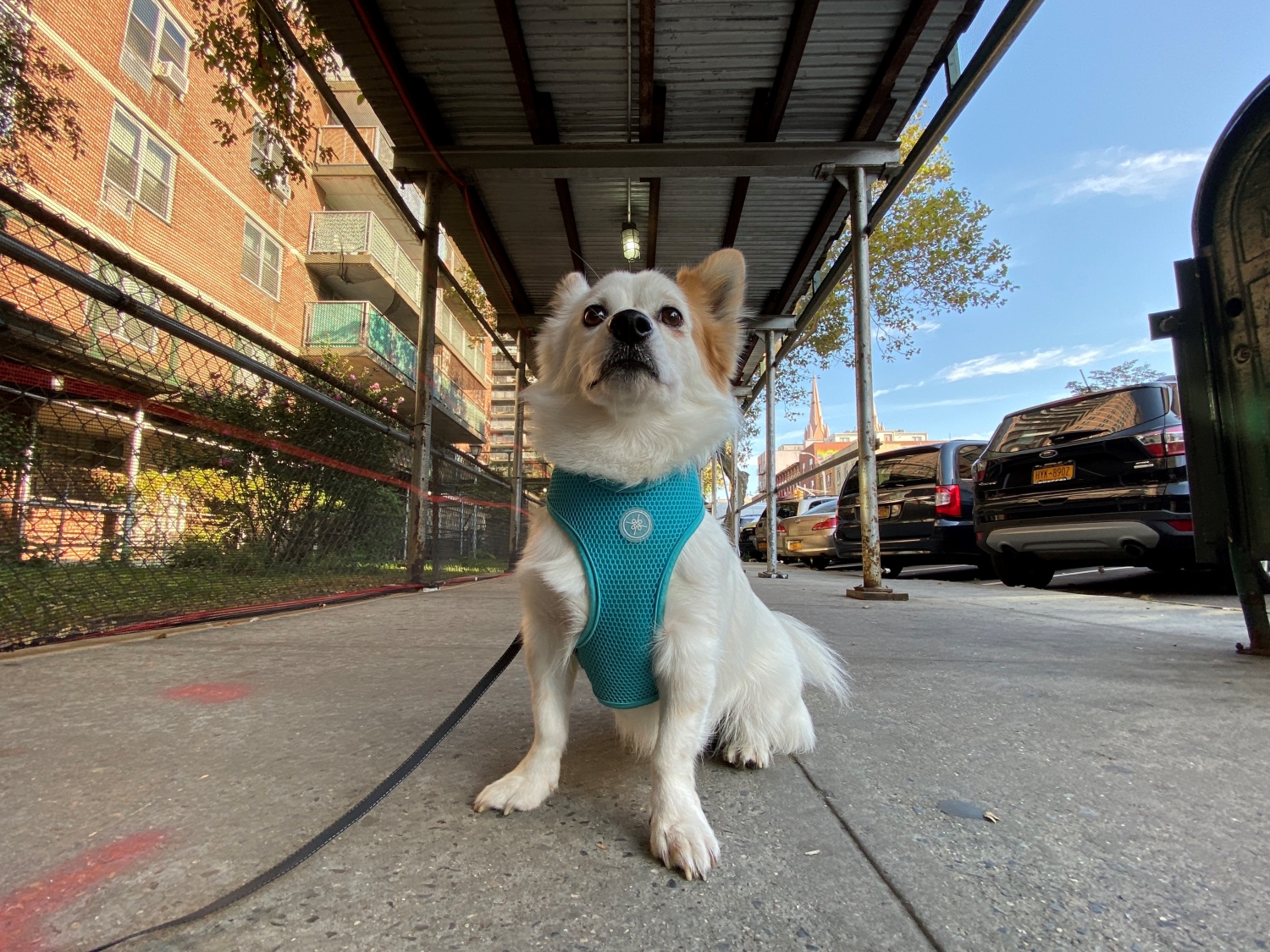Apple placed an emphasis on the cameras in its new iPhone 11 Pro and iPhone 11 Pro Max smartphones, adding an extra ultra-wide-angle lens while also radically improving the image processing technology, as well as adding features like a night mode for better low-light photography.
- Camera specs
- The High Line
- Amor
- Telephoto lens: empty street
- Night Mode: the dog park
- Night Mode: Doorway to the bar
- Without Night Mode
- Telephoto lens: Zooming in the dark
- Portrait Mode: More options
- Portrait Mode: Ultra-low light
- Selfies: Portrait Mode
- Video improvements
- Ultra wide-angle camera
- Wrap-up: and the winner is…
How much of a difference is it over last year’s iPhone XS and XS Max? To find out, I put the iPhone 11 Pro Max in a head-to-head camera shootout against the iPhone XS Max. These results apply to the smaller iPhone 11 Pro and the iPhone XS because they have the exact same cameras as their larger counterparts.
Camera specs
On paper, the specs for the cameras on the new iPhone 11 Pro Max aren’t too different from last year. The main lens and telephoto lenses pack the same 12 megapixels each on both phones, though the telephoto on the newer iPhone has a wider f/2.0 aperture than the f/2.4 on the XS Max; that means better low-light shots. The 2019 iPhone has an extra 12-megapixel ultra-wide-angle lens, which offers a 120-degree field of view so you can capture a new perspective.
Over on the front, the TrueDepth camera system now utilizes a 12-megapixel sensor over last year’s 7-megapixel sensor on the iPhone XS Max. Then there are the improvements to Smart HDR on the iPhone 11 Pro range, night mode, improved focusing speed, and semantic rendering, which altogether improves image quality.
These images were inspected on a professionally-calibrated monitor, but at the end of the day, photography is subjective. Your favorite pictures might not be the ones I picked, and that’s okay.
Now, onto the tests!
The High Line


Our first comparison is taken on The High Line in New York City, overlooking 10th avenue. The iPhone XS Max photo is brighter, but you can easily see the iPhone 11 Pro Max captures wonderful colors, from the rich red bricks on the building to the right to the more vibrant green on the leaves of the trees. There’s more contrast, which helps add depth to the photo, whereas the XS Max’s image looks flat, a little overexposed, and faded.
Zoom in and you can see similar levels of detail, and almost the same amount of grain in dark areas on both photos. The iPhone XS Max does brighten up some dark spots, but the overall photo from the iPhone 11 Pro Max is simply superior.
Winner: iPhone 11 Pro Max
Amor


We’re still walking on The High Line here, but this comparison is a good example of the subtle changes you’ll see in daytime shots. The detail is almost the same in this shot, but the colors across the board are boosted, resulting in a slightly more dynamic image.
Those darker colors mean deeper blacks, again adding more depth to the iPhone 11 Pro Max’s photo, which is a little warmer too. These are all tweaks I’d probably make to the iPhone XS Max’s photo, but with the Pro, it’s a photo that’s ready to be shared right after it’s captured.
Winner: iPhone 11 Pro Max
Telephoto lens: empty street


The iPhone XS Max often attempts to brighten up a whole image, and that’s best seen here. It’s a nice photo, but compare it with the iPhone 11 Pro Max’s photo and you can see exactly how much it has stripped away the shadows. These shadows help make the iPhone 11 Pro Max’s image look more interesting, capturing more contrast, whereas the iPhone XS Max’s shot is flat.
Details are maybe a hair stronger on the Pro’s photo, and colors are a little more natural too, with less of a warmer tone. You can also see a bit of the blue sky on the iPhone 11 Pro Max’s shot, whereas it’s blown out on the XS Max.
Winner: iPhone 11 Pro Max
Night Mode: the dog park

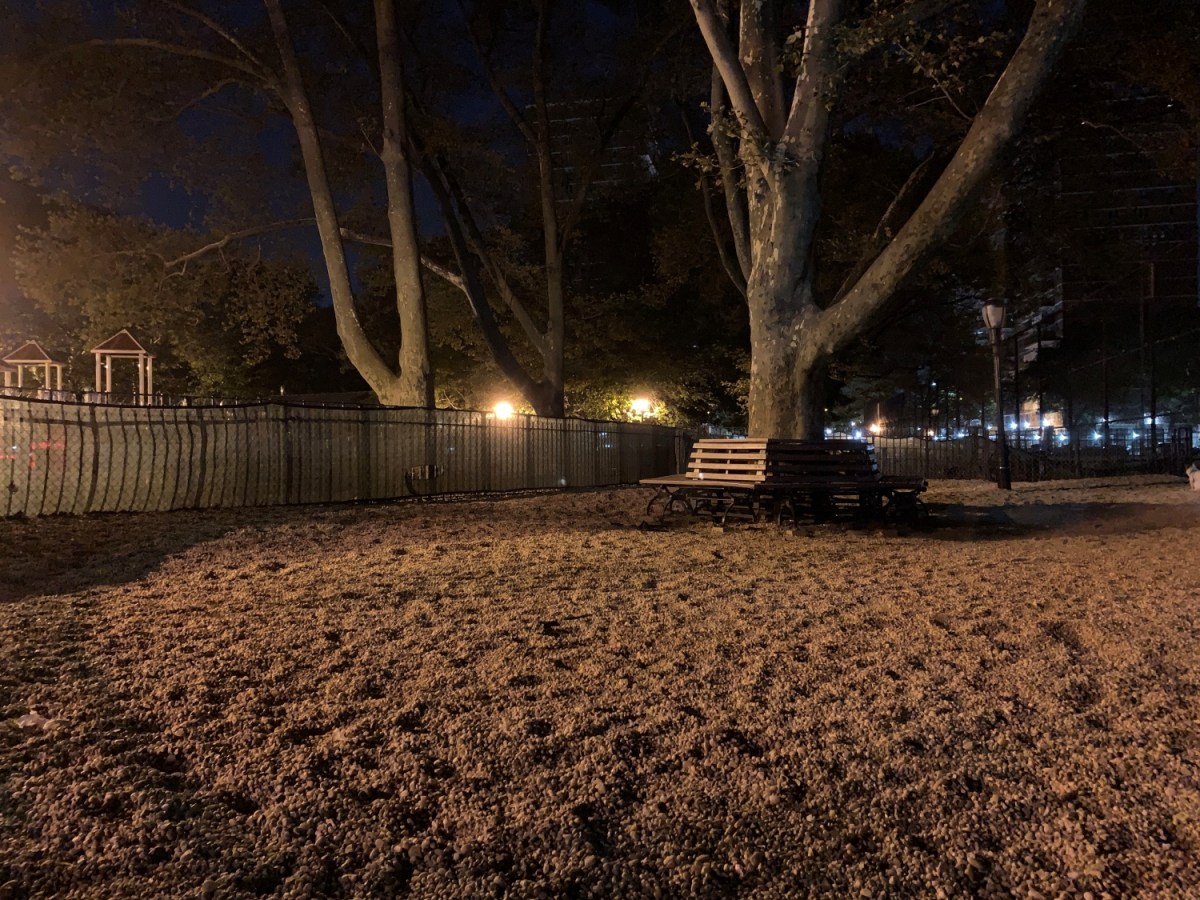
Low light is where we start to see more dramatic changes, and that’s because of the new automatic Night mode that kicks in on the iPhone 11 range when the camera detects poor lighting. It’s a long exposure, and often you’ll see the camera recommend a 3- to 2-second exposure, which does mean you’ll need to stay as still as possible to avoid a blurry shot. You can turn Night mode off and you can also opt for a maximum long-exposure, which varies based on the lighting you’re in. There’s no such Night mode on the iPhone XS Max.
In this photo at the dog park, you can see the iPhone 11 Pro Max’s image is impressively brighter, showing off the twilight blue color of the sky, which is almost invisible in the iPhone XS Max’s photo. Everything in the scene is illuminated more, and the trees, fences, buildings in the background are visible.
You can see that because it’s a long-exposure the husky running on the right is a blur, and if you zoom in closely on the bench, you can see it’s ever-so-slightly blurry. The iPhone XS Max’s photograph is sharper, and that’s because it’s shooting faster. My hands can only be so still, which means you’ll see higher-quality shots if you use a tripod and use Night mode on the iPhone 11 Pro Max.
Still, even with it being a little blurrier than the iPhone XS Max photo, I’d share the iPhone 11 Pro Max’s photo because it’s brighter overall and more visually interesting.
Winner: iPhone 11 Pro Max
Night Mode: Doorway to the bar


Here’s another good example that showcases the improvements Night mode brings to low-light photography. The iPhone 11 Pro Max’s image is brighter overall, maintaining a lot of colors, making for a more interesting photo than the one from the iPhone XS Max. Zoom in on the door and you’ll see less grain, too.
Perhaps more surprising is that I was able to hold the iPhone 11 Pro Max without shaking much because it’s sharper and more detailed than the iPhone XS Max’s image (which took a long time to properly autofocus). Look closely at the red sign at the back of the bar, and it’s far easier to read “No smoking, no vaping,” than on the iPhone XS Max.
Winner: iPhone 11 Pro Max
Without Night Mode

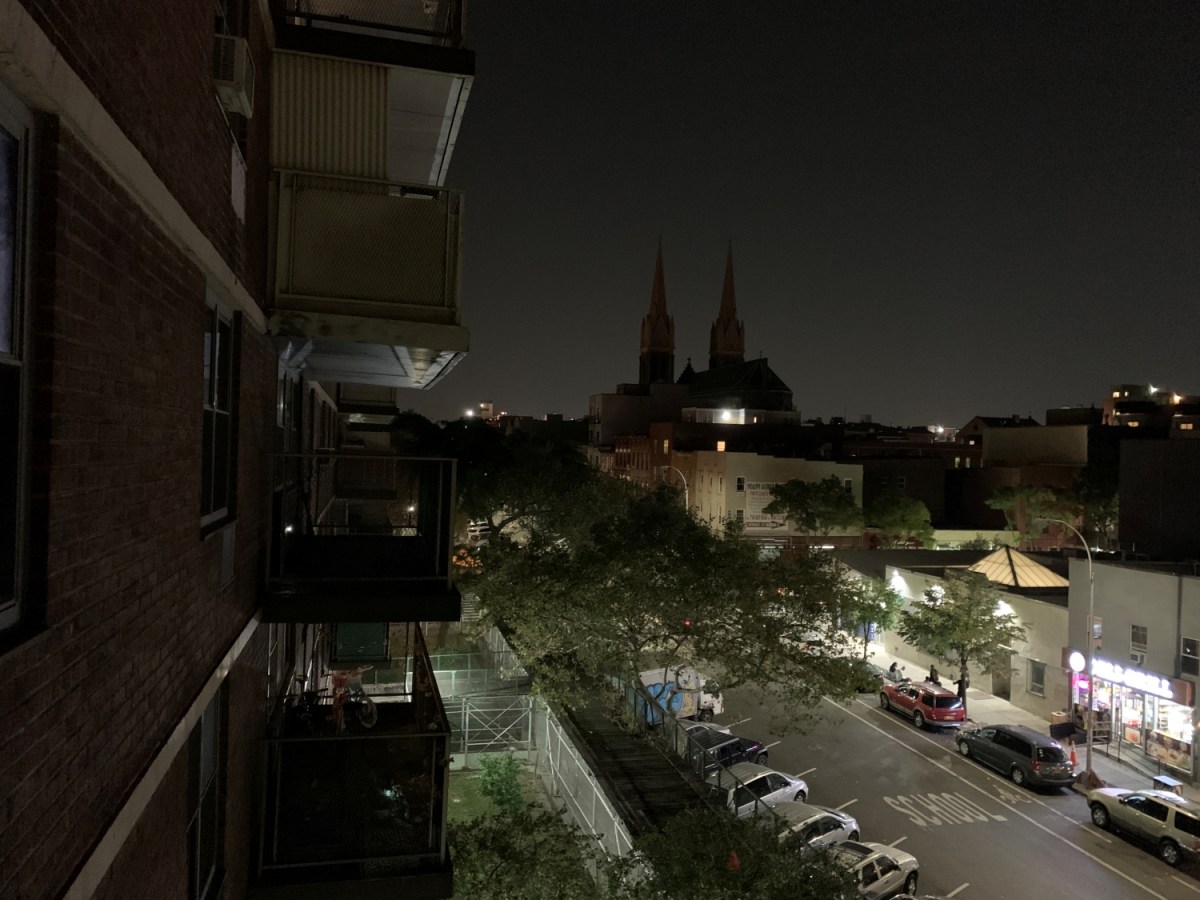
What about comparing low-light photos without using Night Mode on the new iPhone? In the comparison above, you can see there are minor improvements that allow for the iPhone 11 Pro Max to snap a slightly brighter shot, resulting in more visible colors across the board. Noise levels are similar, and detail is unchanged, but the iPhone 11 Pro Max shot is still better.
Winner: iPhone 11 Pro Max
Telephoto lens: Zooming in the dark


Unfortunately, Night mode only works on the main camera, though if the main camera thinks digitally cropping an image with the main camera instead of using the telephoto lens at night will net you a better photo, then it will use it (and Night mode) when you tap on the 2x sign. That being said, the telephoto lens on the iPhone 11 Pro Max does offer up more detailed and colorful photos at night because it has a wider aperture, allowing the lens to take in more light.
This zoomed-in photo of Gimbel’s Bridge in Midtown Manhattan shows the difference. Look closely at the copper structure, and you’ll see details right down to the fine lines. It’s a blurry, grainy mess on the iPhone XS Max’s photo. The colors are bolder, making the photo pop more, and the leaves in the foreground are actually individually visible, rather than the garbled mess on the XS Max.
Winner: iPhone 11 Pro Max
Portrait Mode: More options



Portrait Mode has also improved on the iPhone 11 Pro, but perhaps most important is the fact that you can now take Portrait Mode shots with the main lens instead of having to rely on the telephoto lens (tap the 2X button on the left when you go to Portrait in the camera). By switching to the main lens, the camera isn’t so zoomed into the subject, but it also means you can take advantage of the wider aperture, resulting in a brighter image that’s less grainy.
The first photo at the top is Portrait Mode on the iPhone 11 Pro Max with the standard 2x option, using the telephoto lens. It’s good, capturing nice details and colors. The iPhone XS Max photo comes next, and it’s not bad, but you can see more grain on the girl’s face, and the environment in the background is much darker. The last image is from the iPhone 11 Pro Max, and it’s using the main camera. It allowed me to capture the girl’s outfit more than just her face (without shifting positions), and everything looks sharper, brighter, and colors look positively excellent. It’s a fantastic shot.
It should be noted that the blur quality is impeccable on all these photos, as is the accuracy of the effect around the subject; there are hardly any errors. But the iPhone 11 Pro Max takes the cake for its more pleasing photos, and the extra versatility.
Winner: iPhone 11 Pro Max
Portrait Mode: Ultra-low light


Here’s a more drastic example. The bottom photo has been my experience using Portrait Mode on the iPhone XS Max in low-light situations; the quality has always been poor. You can barely see anything in this photo, and it’s not worth talking about much more. The iPhone 11 Pro Max’s portrait mode photo isn’t perfect, but it’s immensely better and shareable.
Colors are distinctive, despite the overall warm tone, the blur effect looks really good and hair isn’t cut off anywhere. Sure, the girl’s face is grainy, but this is still a stunning photo for Portrait Mode at night and a drastic improvement over last year’s iPhone.
Winner: iPhone 11 Pro Max
Selfies: Portrait Mode
- 1. iPhone 11 Pro Max
- 2. iPhone XS Max
The 12-megapixel camera on the front is better than the 7-megapixel selfie camera on the iPhone XS Max. Do note, that by default capturing selfies in portrait orientation will net you a 7-megapixel cropped photo; you can take a full 12-megapixel shot if you want a group selfie or more of the background by tapping the zoom out button above the shutter.
The comparison above is with Portrait Mode on the front camera, and the iPhone 11 Pro Max easily takes the cake. Zoom in toward the nose and you can see it’s easily a lot sharper, brighter, and more detailed. My face almost looks squished on the XS Max’s photo.
Winner: iPhone 11 Pro Max
Video improvements
There are video improvements on the iPhone 11 Pro Max as well. Both can shoot at 4K 60 frames per second for high-quality footage, but stabilization is a little better, and the extended dynamic range on the iPhone 11 Pro Max allows for better-exposed videos.
Ultra wide-angle camera
And this is all without even talking about the iPhone 11 Pro Max’s ultra-wide-angle camera, which allows for a lot more creative shots. It’s impossible to compare it to the iPhone XS Max, which doesn’t have an ultra-wide-angle lens, but take a look at some of the photos above to see what you can do with it.
Wrap-up: and the winner is…
The iPhone 11 Pro Max. It’s hardly a surprise that a new phone takes better photos than its predecessor, but there are some substantial changes here that warrant those feeling hampered by the camera on the iPhone XS and iPhone XS Max to upgrade to Apple’s latest, particularly with low-light photography, which matches if not surpasses the competition.


